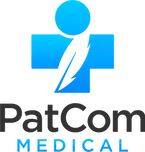Swallowing is a complex process requiring coordination of 30 different muscles working together to pass a bolus of food from the mouth into the stomach. After chewing, with the help of salivary lubrication, the bolus of food passes down from oropharynx to esophagus and then stomach. If the bolus of food gets stuck anywhere during its passage to the stomach, each point of obstruction presents with different symptoms and is managed accordingly.
Oropharyngeal Dysphagia
The pharynx is a hollow muscular tube, about 12-14 cm in length that extends from the base of the skull to the upper border of the upper esophageal sphincter. Anatomically, it is divided into three parts: nasopharynx, oropharynx, and hypopharynx. The nasopharynx serves as an airway, while oropharynx and hypopharynx work together to allow passage of food into the stomach. Any kind of disease or spasm of muscles of oropharynx or hypopharynx can result in dysphagia.
Causes:
Several neurological, muscular, and local causes may result in oropharyngeal dysphagia.
• Stroke
• Head trauma
• Parkinson’s disease • Amyotrophic lateral sclerosis (ALS)
• Polymyositis/dermatomyositis
• Myasthenia gravis
• Muscular dystrophies
• Metabolic disorders (thyroid myopathy)
• Trauma
Symptoms:
The condition ranges from being mildly symptomatic to causing recurrent aspiration pneumonia. Depending on the type and stage of the disease, the patient may present with any of the following:
• The inability to keep the bolus in the mouth
• Difficulty gathering the bolus at the back of the tongue
• Failure to initiate the swallow
• Food sticking in the throat
• Nasal regurgitation
• Inability to propel the food bolus
• Difficulty swallowing solids
• Frequent repetitive swallows
• Frequent throat clearing
• Hoarse voice
• Nasal speech and dysarthria
• Swallow-related cough: before, during, and after swallowing
• Weight loss
• Recurrent pneumonia
Diagnosis:
Modified barium swallow study (MBSS) and fiberoptic evaluation of swallowing (FEES) are two of the best currently available options for diagnostic information and to predict the preferred therapeutic intervention. Besides, these can also be used to evaluate the patient’s response to treatment.
Management:
Currently, there are no drugs that can cure dysphagia. The only option is a surgical intervention to correct the defect. Other modalities that may alleviate the symptoms of oropharyngeal dysphagia are rehabilitation, dietary modification, and physical therapy regimens designed to strengthen the muscles.
Esophageal Dysphagia
The esophagus is a hollow muscular tube about 25 cm long extending from hypopharynx to stomach. Physiologically there are three levels at which esophagus constricts, and these should not be confused with pathological constructions that result in dysphagia. These are cervical, thoracic, and abdominal constrictions at the level C5/6, T4/5, and T10/11, respectively.
Causes:
• Achalasia
• Gastroesophageal reflux disease (GERD)
• Esophagitis
• Esophageal strictures and rings.
• Esophageal tumors.
• Senile causes
• Previous surgery
Symptoms:
The most important complaint of the patient is the feeling of having something stuck in the throat. Other symptoms are:
• Difficulty in swallowing
• Pain
• Regurgitation
• Drooling, coughing, choking
• Wheezing
• Hoarse voice
• Dysphagia for liquid in advance disease
Diagnosis:
The diagnostic approaches are the fiberoptic evaluation of swallowing (FEES) and modified barium swallow study (MBSS) to provide thorough information about the disease and intervention required. Management:
The patient can be treated with drugs, surgery, or physical dilatation of the esophagus, depending upon the condition. Dietary modification and speech therapy will also help in alleviating symptoms.
